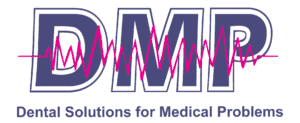American Stroke Association Meeting Report – Abstract 3434/P161 – Embargoed until 8am CT/9am ET
February 01, 2012
Study Highlights:
- Sleep apnea is common in people with silent strokes and small lesions in the brain.
- Having more than five sleep apnea episodes per night was associated with silent strokes.
- Early treatment of sleep apnea may help reduce risk of silent strokes in these patients.
NEW ORLEANS, Feb. 1, 2012 — People with severe sleep apnea may have an increased risk of silent strokes and small lesions in the brain, according to a small study presented at the American Stroke Association’s International Stroke Conference 2012.
“We found a surprisingly high frequency of sleep apnea in patients with stroke that underlines its clinical relevance as a stroke risk factor,” said Jessica Kepplinger, M.D., the study’s lead researcher and stroke fellow in the Dresden University Stroke Center’s Department of Neurology at the University of Technology in Dresden, Germany.
“Sleep apnea is widely unrecognized and still neglected. Patients who had severe sleep apnea were more likely to have silent strokes and the severity of sleep apnea increased the risk of being disabled at hospital discharge.”
The researchers found:
- Ninety-one percent (51 of 56) of the patients who had a stroke had sleep apnea and were more likely to have silent strokes and white matter lesions that increased risk of disability at hospital discharge.
- Having more than five sleep apnea episodes per night was associated with silent strokes.
- More than one-third of patients with white matter lesions had severe sleep apnea and more than 50 percent of silent stroke patients had sleep apnea.
- Even though men were more likely to have silent infarcts, correlations between sleep apnea and silent infarcts remained the same after adjustment for such gender differences.
The patients — average 67 years old, white and 54 percent women — underwent overnight in-hospital testing for sleep apnea.
Magnetic resonance imaging and computerized tomography determined silent strokes and white matter lesions. Neuroradiologists were blinded to the sleep study findings and outcome.
Researchers suggested that sleep apnea should be treated the same as other vascular risk factors such as high blood pressure.
“Demographic characteristics in our study are comparable to western European populations, but our findings may not be entirely generalizable to other populations with diverse ethnicities such as in the U.S.,” Kepplinger said.
The researchers plan more studies on sleep apnea, particularly in high-risk patients with silent strokes and white matter lesions, to determine the impact of non-invasive ventilation and on short-term clinical outcome, researchers said.
Co-authors are: Kristian Barlinn, M.D.; Amelia Boehme, M.S.C.; Lars-Peder Pallesen, M.D.; Wiebke Schrempf, M.D.; Johannes Gerber, M.D.; Karen Albright, D.O., Ph.D.; Andrei Alexandrov, M.D.; and Ulf Bodechtel, M.D. Author disclosures are on the abstract.
